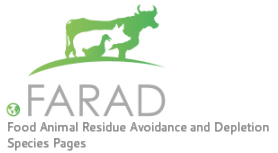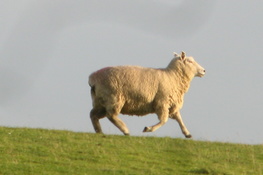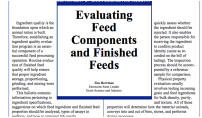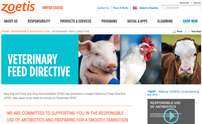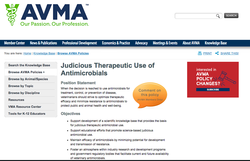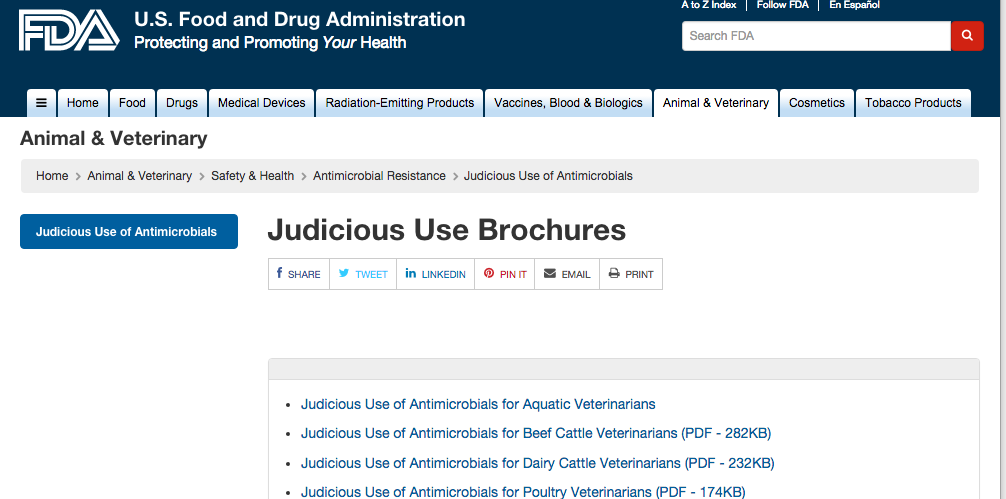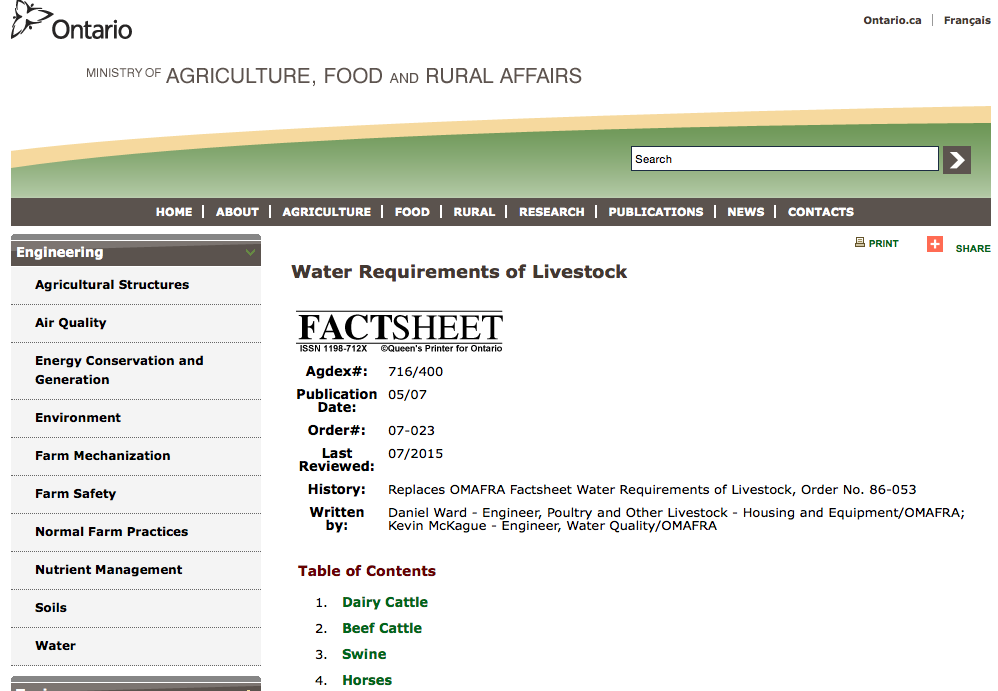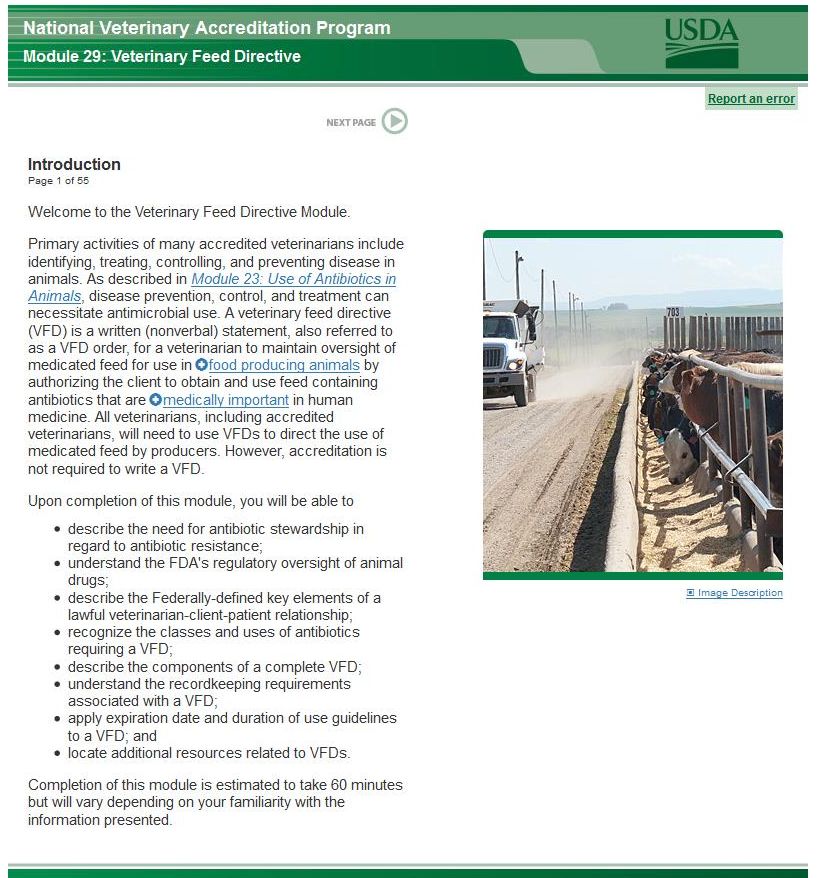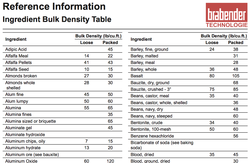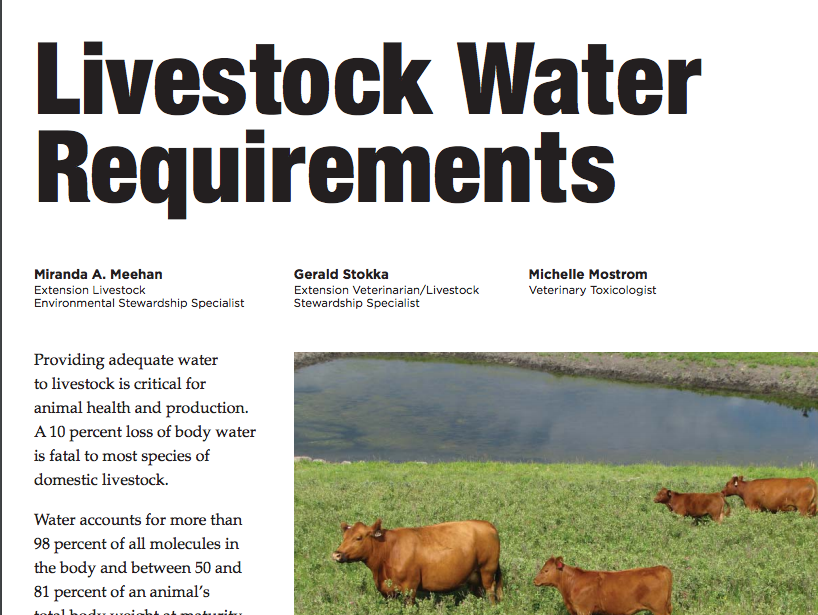VFD Resources and Frequently Asked Questions
|
March 10, 2016.
Answers to some of the questions posed at the Farm Foundation VFD workshops: FDA responds to industry questions on Guidance #213, revised VFD rule. |
Frequently Asked Questions
When did these changes go into effect?
For VFDs that are already marketed, the changes went into effect October 1st, 2015. The transition of products to VFD status was completed December 2016. Until that time, products can be used as they have traditionally been.
Will injectable medications still be available?
Yes, injectable antibiotics are not affected by these regulations. If an injectable antibiotic is available over-the-counter, it will continue to be available. Please note that in the state of California only, SB 27 affected the over-the-counter status of medically important antimicrobials beginning January 2018.
Are medicated milk replacers affected?
Yes, medicated milk replacers containing medically important antimicrobials such as oxytetracycline and neomycin will transition to VFD status. Products containing low levels of antibiotics meant to be fed continuously will likely become unavailable.
Are there any provisions for the use of VFDs in small ruminants?
There are some VFDs labeled for use in sheep and goats. Additionally, compliance policy guide 615.115 represents the US Food and Drug Administration's current guidance on extralabel use of drugs approved for use in or on animal feed (medicated feeds) for minor species. The CPG is intended to provide regulatory guidance on the extra label use of over-the-counter (OTC) and veterinary feed directive (VFD) medicated feeds, when being administered to minor species.
Will I be able to feed chlortetracycline medicated feed to my cattle for an outbreak of foot rot?
No. This is extralabel use and extralabel use of VFDs is prohibited.
What happens to leftover medicated feeds with old labels after the regulatory effective date of January 1st, 2017? Can I use them?
You will require a VFD to use them once the regulations go into effect. The old products do not need to be destroyed but can be used under a new VFD.
Can a veterinarian write a VFD for his own cattle?
Yes
What products are affected?
The following products transitioned to VFD prior to the regulations going into effect on January 1st, 2017. A more detailed list may be found on FDA's website.
What products are not affected?
Ionophores, coccidiostats, bambermycins and anti-parasitics will not be affected. Some of these include:
What happens if I have leftover feed when the VFD expires?
If a producer has leftover feed from livestock that no longer need antibiotics, the veterinarian can write a new VFD for another set of animals using the leftover feed/drug.
For VFDs that are already marketed, the changes went into effect October 1st, 2015. The transition of products to VFD status was completed December 2016. Until that time, products can be used as they have traditionally been.
Will injectable medications still be available?
Yes, injectable antibiotics are not affected by these regulations. If an injectable antibiotic is available over-the-counter, it will continue to be available. Please note that in the state of California only, SB 27 affected the over-the-counter status of medically important antimicrobials beginning January 2018.
Are medicated milk replacers affected?
Yes, medicated milk replacers containing medically important antimicrobials such as oxytetracycline and neomycin will transition to VFD status. Products containing low levels of antibiotics meant to be fed continuously will likely become unavailable.
Are there any provisions for the use of VFDs in small ruminants?
There are some VFDs labeled for use in sheep and goats. Additionally, compliance policy guide 615.115 represents the US Food and Drug Administration's current guidance on extralabel use of drugs approved for use in or on animal feed (medicated feeds) for minor species. The CPG is intended to provide regulatory guidance on the extra label use of over-the-counter (OTC) and veterinary feed directive (VFD) medicated feeds, when being administered to minor species.
Will I be able to feed chlortetracycline medicated feed to my cattle for an outbreak of foot rot?
No. This is extralabel use and extralabel use of VFDs is prohibited.
What happens to leftover medicated feeds with old labels after the regulatory effective date of January 1st, 2017? Can I use them?
You will require a VFD to use them once the regulations go into effect. The old products do not need to be destroyed but can be used under a new VFD.
Can a veterinarian write a VFD for his own cattle?
Yes
What products are affected?
The following products transitioned to VFD prior to the regulations going into effect on January 1st, 2017. A more detailed list may be found on FDA's website.
- Chlortetracycline (Aureomycin, CLTC, Pennchlor)
- Chlortetracycline + Sulfamethazine (Aureo S 700)
- Neomycin + Oxytetracycline (Neo-Terramycin, Neo-Oxy)
- Oxytetracycline (Terramycin, Pennox)
- Tylosin (Tylan)
- Virginiamycin (V-Max)
What products are not affected?
Ionophores, coccidiostats, bambermycins and anti-parasitics will not be affected. Some of these include:
- amprolium (Corid),
- bacitracin (Albac, BMD),
- bambermycin (Gainpro),
- decoquinate (Deccox),
- fenbendazole (Safe-Guard),
- laidlomycin (Cattlyst),
- lasalocid (Bovatec),
- melengestrol acetate (MGA),
- methoprene (Altosid),
- monensin (Rumensin),
- morantel (Rumatel),
- poloxalene (Bloat Guard)
- ractopamine (Optaflexx, Actogain),
- tetraclovinphos (Rabon)
What happens if I have leftover feed when the VFD expires?
If a producer has leftover feed from livestock that no longer need antibiotics, the veterinarian can write a new VFD for another set of animals using the leftover feed/drug.
FARAD VFD Calculator and Conversions Reference
| |||||||
Useful Links
Slides from Farm Foundation's workshop on stewardship of medically-important antimicrobial use in food animals
View slides from the Davis, CA workshop below. A webcast of the Denver, CO workshop is also available.
|
FDA Slides: Presentation by Craig Lewis,
DVM MPH from the Office of the Director at CVM |
"Medically Important Antibiotics in Animal Agriculture": This presentation provides an overview of the changes regarding medically important antibiotics being made (GFI #209 and #213) and affected drugs. An overview of VFDs and the regulations pertaining to them.
|
| ||||||
|
USDA APHIS Slides: Presentation by Kathe Bjork, DVM Ph.D., Center for Epidemiology and Animal Health, National Animal Health Monitoring System
|
"Antimicrobial Resistance: Research, Surveillance and Outreach" This presentation provides an overview of how the different agencies within USDA are collecting data regarding antimicrobial resistance now and in the future
|
| ||||||
|
Regional Veterinarian Perspective: Presentation by Stuart Hall, DVM from Feedlot Health Management Services
|
"A Veterinarians Perspective of VFDs": This presentation provides background on VFDs, what it means to veterinarians, the veterinarian's role, how the veterinarian can ensure responsible antibiotic use and implementation of the VFD regulations.
|
| ||||||
|
Regional Feed Distributer Perspective: Presentation by Marit Arana, Ph.D. from A.L. Gilbert Company
|
"The Feed Industry's Perspective on VFDs": This presentation provides an overview of the feed distributor's responsibilities in regards to VFDs, how to track compliance, how to educate and engage customers regarding the new VFD regulations.
|
| ||||||
